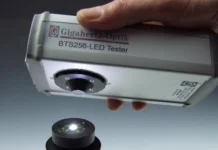The capital cost of an electron beam often is cited as a disqualification for consideration. Just this past May at the RadTech event, a presenter excluded EB in a comparison study, before seeking any performance results, because it is an expensive technology – implying that even if it did meet all the tested criteria, it wasn’t worth presenting to customers as a solution because it wouldn’t be widely adopted. Ranging from several hundred-thousand to several million dollars, it is fair to say that EB has a substantial capital cost, and capital cost certainly should be considered when deciding on a new or expanded production line. No arguments here! However, before striking EB from the solutions list, take a moment to recover from the initial sticker shock and view that cost in perspective.
Capital Cost vs. Capability
The cost of an electron beam is tied to its capabilities, with those costs generally increasing with increased accelerating voltage, beam width, throughput, and custom or complex material handling. Yet, the relationship between cost and capability is not necessarily linear; nor can a beam’s capability always be capped precisely at the level a process requires. A power supply, for example, can accommodate a range of accelerating voltages and throughputs, which means, depending on each process owner’s perspective, either you are paying for excess capabilities you don’t need or you’re getting extra capabilities for free. Moreover, certain combinations of EB specifications may be less expensive than others because they are standard system offerings. It may seem like an obvious suggestion, but talk with prospective EB providers! They will help explore different options to try and find the right combination of capability and capital cost to fit the product’s needs and ROI expectations.
Understand that the most economical utilization of a beam in your production might require changes to the process – whether that is moving a beam offline so that it can keep pace with multiple printing presses, treating with EB at an earlier stage to simplify material handling, or flipping material over for dual-sided treatment so that more can be accomplished with a lower-voltage system. If EB is a good choice for the product, don’t be afraid to be creative with the implementation to maximize capability while minimizing capital cost. Every process change has a consequence, but the least expensive part of any new or upgraded line is thinking about what if. What if the line ran a wider web or multiple lanes of material? What if this process can be brought in-house? And then, how do these changes measure up against production needs and profitability?
With capability also comes flexibility, especially in printing and packaging applications. Given the right voltage range and material-handling accommodations up- and/or downstream, a single beam can be used to cure ink and overprint varnishes, to laminate, to cross-link film, and to embellish with spot embellishments, excimer, cast and cure, and cold foil transfer. Consider this versatility when contemplating what value EB can bring to your production now and into the future.
Once there is an understanding of what EB system(s) could fit the process, be realistic when comparison shopping. Is the price of an EB higher than that of a single UV lamp? Yes. Can the ideal throughput be met with a single UV lamp? If yes, then, admittedly, EB may not be a cost-effective choice. If not, don’t assume – do the math! What is the break-even point, and what influence does it have on other factors (i.e., maintenance costs, floor space, etc.)? What does future growth look like? If you project a need to expand again in three to five years, are there savings in the mid-term with a single beam that can manage the forecasted increase in throughput now? Don’t oversimplify the comparison factors. There may be areas where EB doesn’t stack up to the current process, but it excels by other metrics. Challenge prospective EB providers with the pain points (e.g., reliability, repeatability, repairability) and/or limitations, and they might surprise you with benefits of EB you hadn’t thought to measure.
Recurring Costs
Capital cost is a very important consideration, but it is a one-time cost. Recurring costs, such as operating and maintenance costs, may be less significant to the balance sheet initially, but they can add up over time and should be given appropriate weight in the decision-making process. Things like energy consumption and consumable machine parts might be top of mind, but don’t forget to ask about less obvious recurring costs too. How many people are needed to operate the line? How much downtime is expected for yearly maintenance?
Furthermore, consider what existing recurring costs will disappear with the installation of a beam. For example, the oxidizer maintenance required for solvent-borne chemistries isn’t necessary for solvent-free EB inks and coatings. Overtime allowances for finishing solvent-less lamination jobs, which have a limited pot life, aren’t needed for EB adhesives that can be left in the coater overnight. The introduction of EB into a process can have a ripple effect on other operational expenses.
Material costs factor into this equation as well. In some cases, material costs might decrease in the absence of photoinitiators or chemical cross-linkers. In comparison to solvent-borne coatings, however, EB coatings are likely to be more expensive, even when assessed on the basis of dry film weight. Evaluating material expenses in conjunction with other recurring costs provides a more pragmatic viewpoint; the energy savings gained when switching from solvent-borne to EB, for example, is more than enough to offset the increase in material costs.
Additionally, don’t let capital costs become recurring – machine lifetime is another major factor!
Finding Value
What value does EB bring to a process or a product? EB owners run the gamut from small start-ups to large corporations, and each one has justified the cost of ownership by finding the value for themselves. Electron beam manufacturers tout the highlights to get the conversation started and the imagination working – sustainable, durable, instant cure, photoinitiator-free, colorblind, cross-linking and sterilization without added chemicals, etc. Yet the highlights only illuminate in broad strokes. With all the different applications for which EB is used, with all the different methods by which EB is applied within an application, and with all the different nuances of each individual production line, it nearly is impossible to capture all the ways in which EB can improve or challenge a process. It is incumbent upon the process owner to truly delve into how EB will affect production.
It is easy to say that EB can eliminate solvents from a process, but what value does that truly have – monetary or otherwise? The prevention of volatile organic compounds (VOCs) is noteworthy and fits easily into a message of sustainability. But perhaps it is worth more to consider how eliminating solvents also eliminates the need for specific infrastructure – explosion-proof equipment, coater rooms with fire suppression and ventilation, oxidizers – or how it benefits worker health and safety or reduces EPA paperwork. Instant cure (in milliseconds) sounds fancy, but is its value in the ability to immediately begin post-processing, or in the relatively small footprint of the system (which may bring facility cost savings, allow room for other equipment, avoid renting a larger building, and/or decrease set-up time and material waste), or in something else entirely? Ask questions. Probe deeply. Find the value for your company and your production. Some companies find further value in promoting these features; others choose to keep their methods proprietary.
An electron beam will not be the solution to every problem. Nevertheless, when EB shows promise for an application through added product or process performance, do not let the equipment cost alone prevent the realization of those benefits. Capital cost cannot be overlooked, but it should be weighed appropriately amongst other deciding factors and not act as a standalone deterrent. It might take a bit more effort to uncover all the value EB has to offer, but a little hard work pays off!
 Sage Schissel, Ph.D.
Sage Schissel, Ph.D.
Applications Specialist
PCT Ebeam and Integration LLC
sage.schissel@pctebi.com






